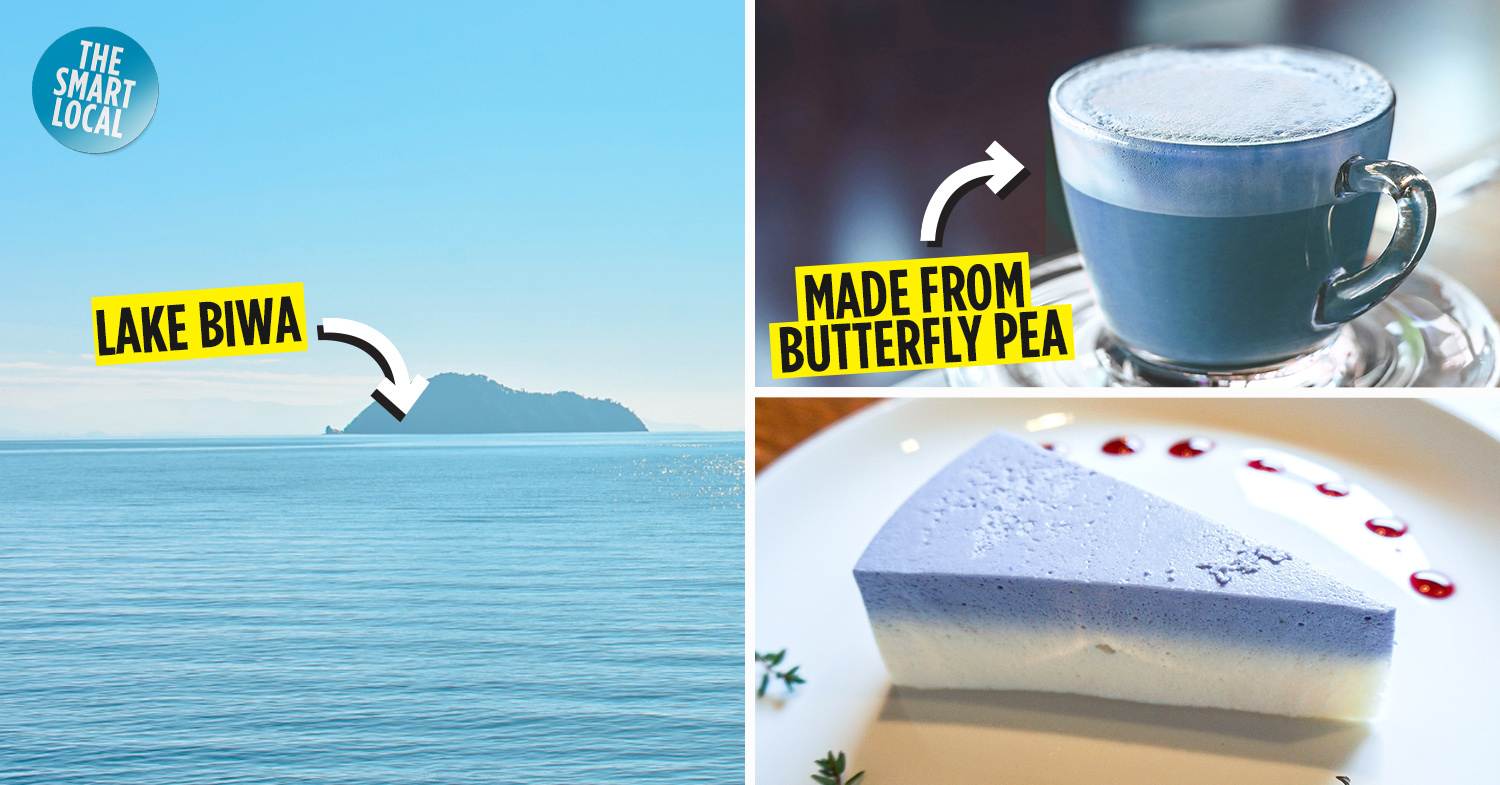Nagahama creates blue food
Most people would find it hard to name more than a handful of blue-coloured food, but that’s not the case for folks living in Nagahama. Blue curry, blue tea, blue chocolate, and even blue pudding are the norm for these special folks.
Nagahama, the town of blue
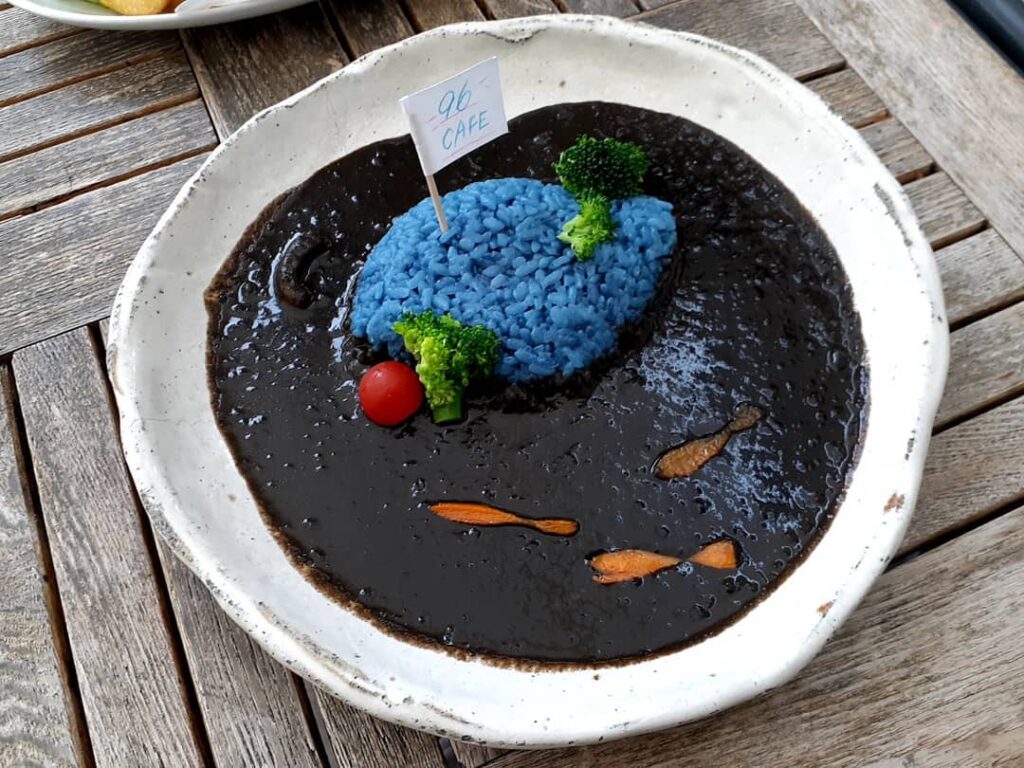
Nagahama’s blue rice with black squid curry.
Image credit: @nana.3005
In light of the Covid-19 pandemic, the town of Nagahama in the Shiga prefecture of Japan has turned to new ways to maintain their town’s tourist population.
They have transformed some of their most famous dishes into masterpieces rendered in blue – think pound cake with blue frosting, blue ice cream, blue cheesecake, blue mochi, and even blue rice with black squid curry. The unusually coloured dishes draw inspiration from Shiga’s beloved Lake Biwa, which is renowned for its beautiful deep blue hue.
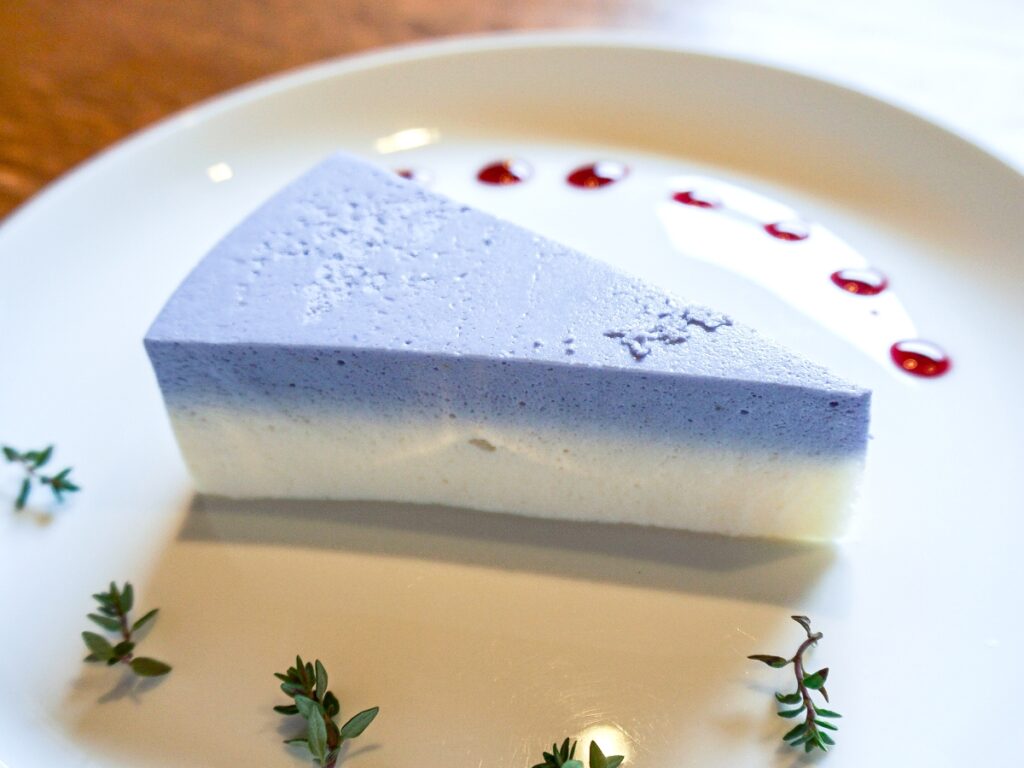
Nagahama’s blue cheesecake.
Image credit: BiwakoBlue
Leading the charge of the blue movement is Akihisa Tsuji, a CEO of a company in Shiga Prefecture. In an interview with Nikkei Asia, he stated that he wanted to use the colour blue, which incites happiness, to revitalise the prefecture. Akihisa also launched a website called BiwakoBlue, named after Lake Biwa, to showcase the variety of blue food the region has to offer.
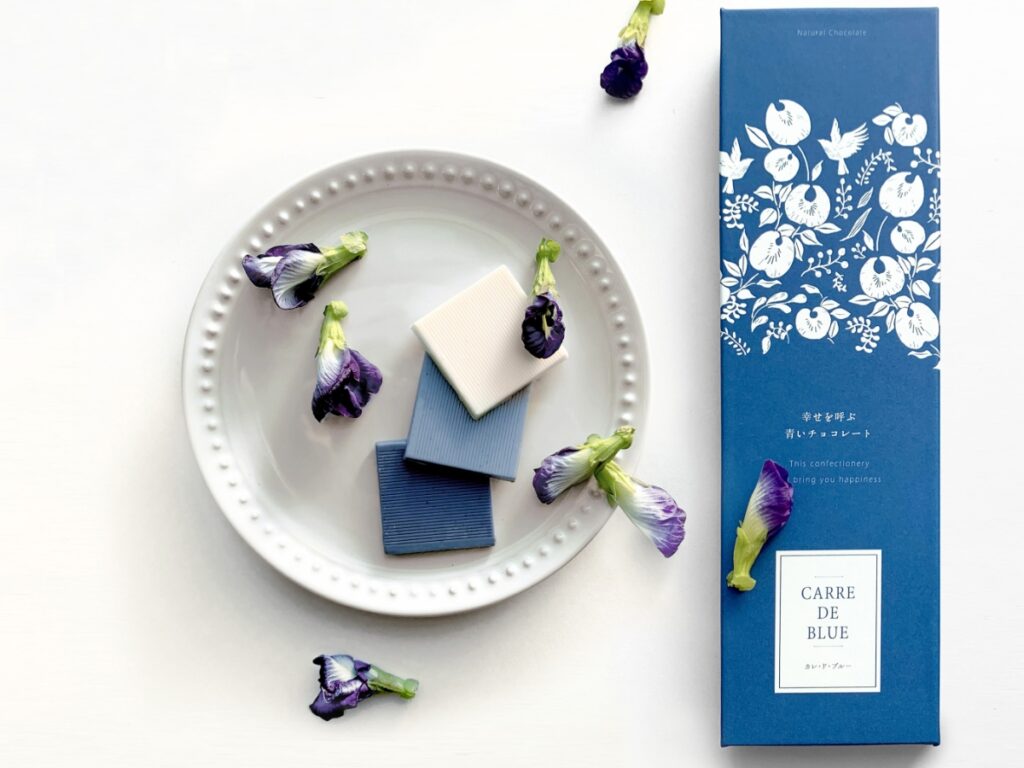
BiwakoBlue’s blue chocolate, Carre de Blue.
Image credit: BiwakoBlue
The region’s blue movement has been backed by 25 companies that have helped Nagahama to commercialise blue sweets and drinks, one of which is a blue chocolate called “Carre de Blue.”
How Nagahama dyes blue food naturally
Blue food colouring is associated with being unnatural. In fact, the colour has actually been proven to suppress one’s appetite, hence the popularity of Nagahama’s blue food is quite surprising. But how exactly does one render non-blue food blue?
BiwakoBlue uses a natural food dye made by boiling the dried petals of the butterfly pea plant. The petals do not have any flavour and hence act as a perfect natural food colourant.
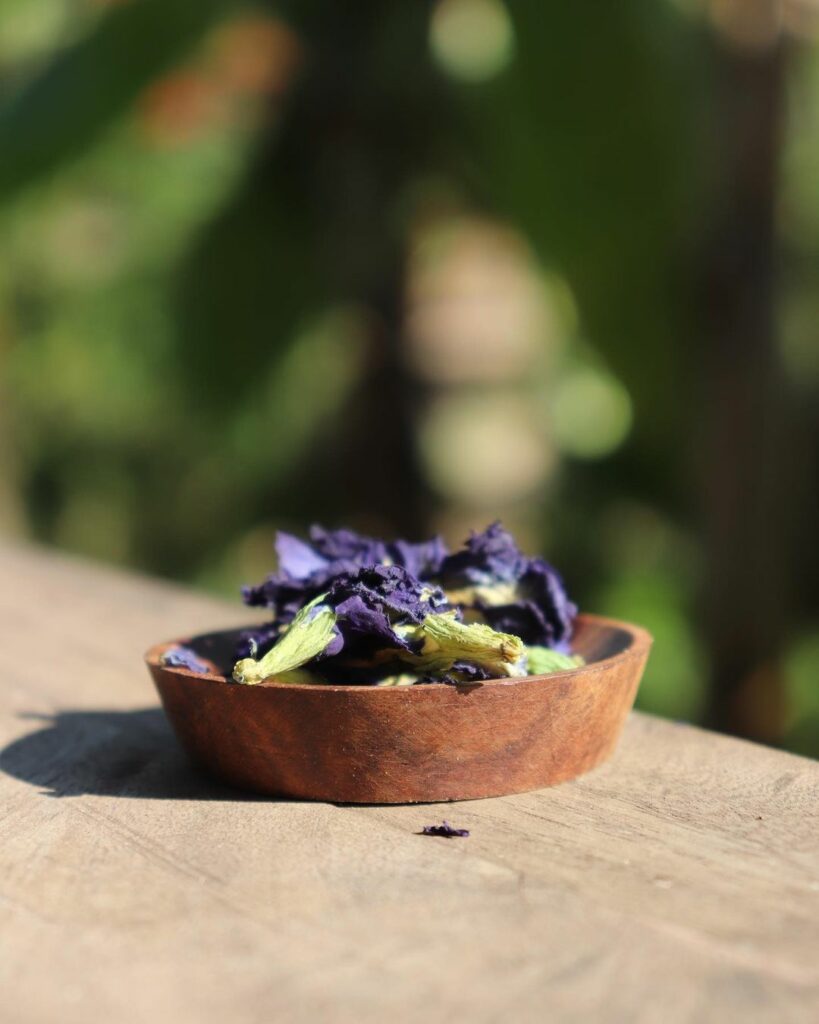
Image credit: @laplantationfairspices
Interestingly enough, the blue colourant made from butterfly pea was only authorised for use as a food pigment in Japan in 2017. Akihasa had a part to play in this arena as he kickstarted the cultivation of the flower, using organic farming techniques, in Laos and Thailand.
As blue food is uncommon in Japan, Akihasa states that people are intrigued by its existence, especially on social media. This has led to a high popularity of their blue food products.
Nagahama creates blue food inspired by Lake Biwa
Although the idea of blue food makes some of us feel a little queasy, Nagahama’s blue food is undeniably beautiful and may just change our minds. Should you have the time, head to Nagahama to experience the true blue life of eating blue food and enjoying the view of the deep blue Lake Biwa.
Also check out:
- Level up your instant soup game with drip-brewed soup, courtesy of Kikkoman
- Experience barbeque on a new level with fish marshmallows
- “Good luck” tuna not so lucky after all
- Japanese Buddhist monk dances to EDM in candy ad
- Visit Uroko House: a fish scale covered house in Kobe, Japan
Cover image adapted from (clockwise from top left): BiwakoBlue, BiwakoBlue, and BiwakoBlue
